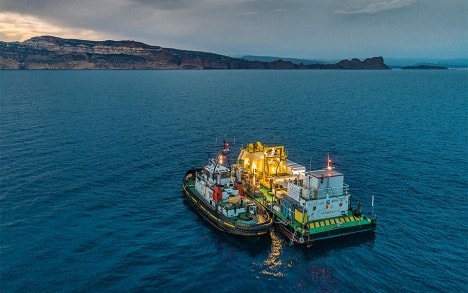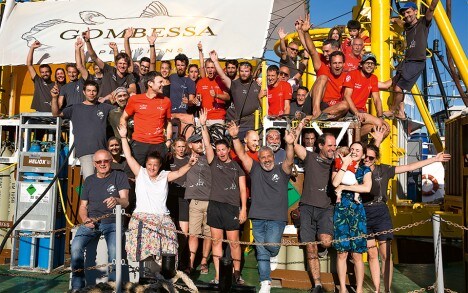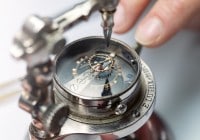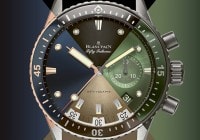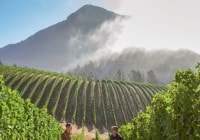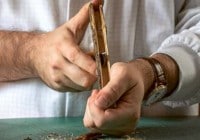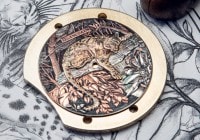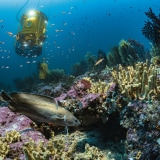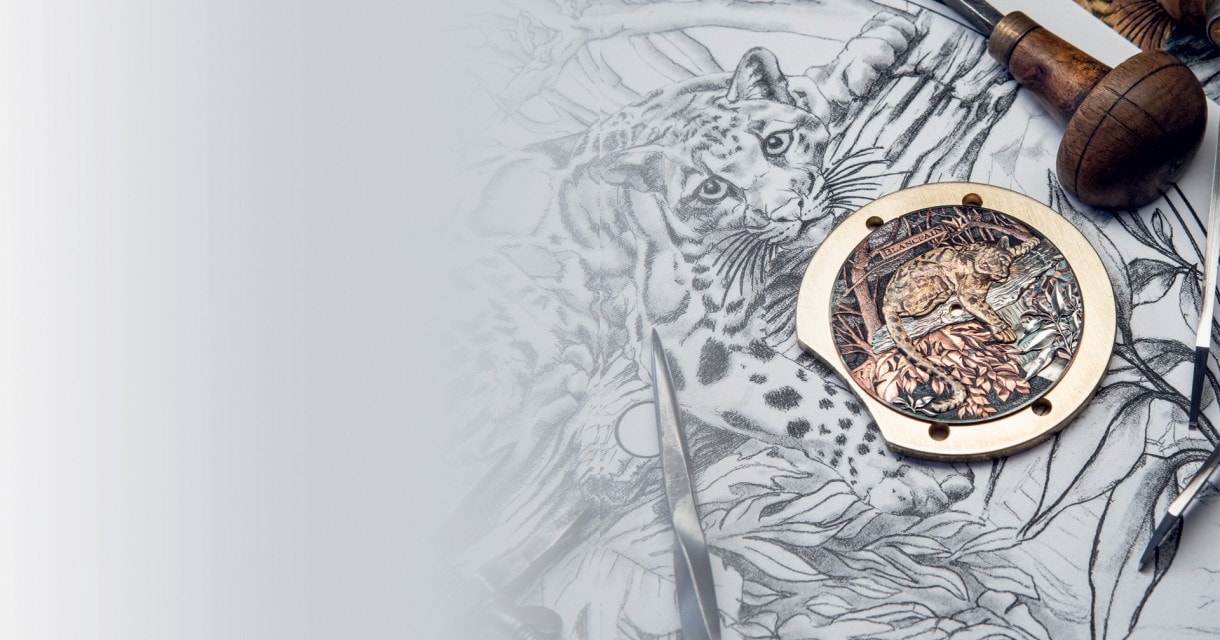
Search in Issues
Chapters
List of parts
Chapter 6
Planet MEDITERRANEAN
The search for unspoiled universes along the most frequented coastline on the planet.
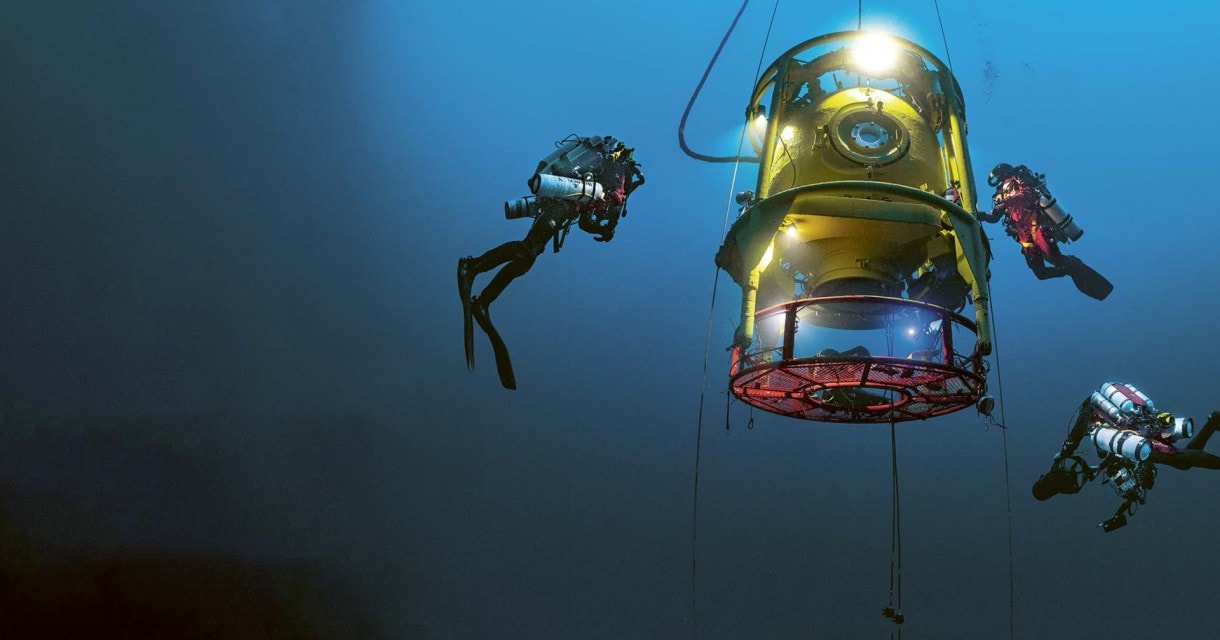
My passion for the underwater world was born along the Mediterranean coast. Known for its beauty and diversity, this is the most frequented coastline on the planet, notably due to unchecked urbanization that has been going on for far too long, runaway summer frequentation and insidious industrial emissions... All these pressures have but increased over the last century, and inevitably, outside of the reserves, the first 50 metres have suffered. But further afield than that, was it possible to find unspoiled universes? I saw them for ten minutes. Twenty minutes. Maybe 30 minutes, on days when we were in shape! But these minutes at the bottom imply four to six hours of decompression before reaching the surface. There is no other solution.
I have been observing the depths of the Mediterranean for the past 20 years, experiences often accompanied by powerful emotions despite the brevity of the dives. That’s one of the reasons I photograph it: to enjoy the pleasure long after these dives lasting just a few minutes. Minutes that were to be transformed into hours in the summer of 2019 and part of the reason I thought up this trip: a continuous 28-day dive along the French Mediterranean coast. To enable this, there is only one solution: a joint effort on the part of scuba and saturation divers. The autonomy of some and the mobility of others in the quest to become aquanauts, or “oceanauts”, a term so dear to Commander Cousteau.
July 1st 2019. Dressed in our red suits, I have the sensation, as the heavy metal door closes behind us, of having entered a ship that is taking us to the moon. The truth is that we are heading to a world even more unknown than the gridded surface of our satellite: between -70 and -140 metres below the surface in the depths of the French Mediterranean Sea. In our floating pressurized 5m2 Bathyale station, my three companions, Yanick, Thibault, Antonin, and I, are voluntary prisoners. Inside we eat and rest. We can’t escape, apart from during our dives. Every day, sometimes even twice a day, we get dressed in the tiny bathroom facilities and slide into the descent module that takes us down into the depths. Beneath the descent module, in a basket prepared and checked by the surface team, our equipment awaits us. Each diver has his own avatar, in whom he has absolute confidence. It’s like jumping with a parachute that you haven’t packed yourself. Thibault, who assists me underwater, couldn’t be more confident than with his wife Justine, also a diving instructor. Yanick didn’t have to look far either. It’s his big brother Cédric who looks after his equipment. They are inseparable on big missions during which Yanick films in extreme conditions. In addition to assisting Yanick with the lighting, Antonin takes care of the science of diving. He needs two avatars: Florian, who is in charge of logistics and science, and Thomas, Antonin’s friend and accomplice on all the research missions around the world. And I went to Spain to find Jordi. He is an excellent underwater photographer, experienced in rebreather technique. But above all, he will take care of my five cameras.
We don our rebreathers confidently and unlike the encumbered scuba divers, we leave the descent module without an umbilical. At the end of the dive, we return to the descent module, and it brings us to the surface and connects to the station so that we can eat and rest before the next dive. There is no more decompression between dives. It will take almost five days, at the end of the mission, to decompress in the station, finally opening the heavy metal door to go out in the open air.
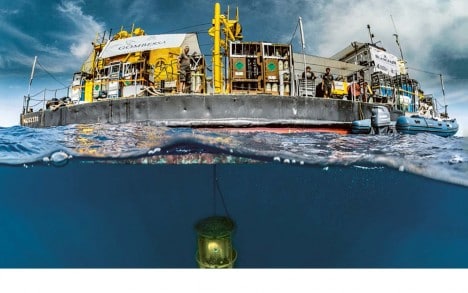
The descent module leaves the Bathyale station and takes the aquanauts to the depths (Photo: Jordi Chias)

The aquanauts and the descent module, Phare de la Cassidaigne, Cassis - 70 m.
The time at the bottom is COUNTED IN HOURS; the dive will last 28 DAYS.
Approaching Planet Mediterranean. Unlocking the door, extravehicular exit, exploration... The words are almost right, but this is not an interstellar journey: down here, life is everywhere.
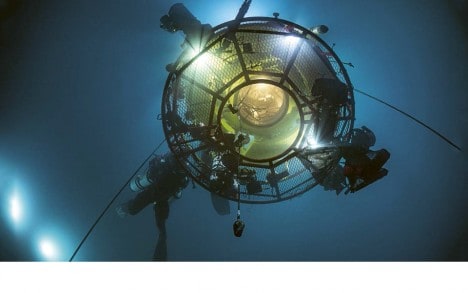
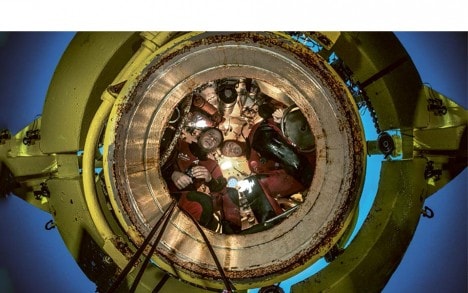
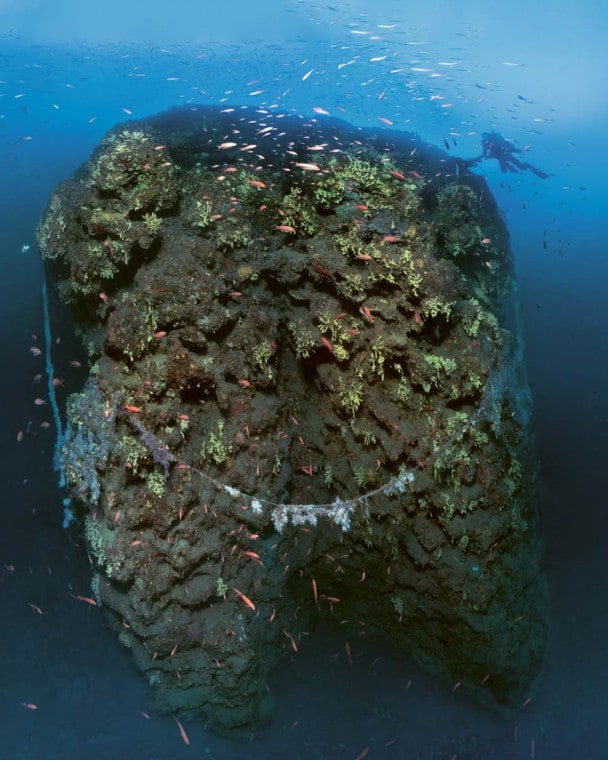
The dome with cave sponges, Rade d'Agay - 90 m.
An incredible sensation from the very first dive: we are no longer divers back-rolling off a boat, but aquanauts, leaving their Bathyale station. I look back at the descent module which disappears into the blue as we move away. For the time being we keep it in sight, as it is our only way out. We move forward slowly, no longer in a hurry for anything, aware of everything around...
It was from this island in the Calanques National Park that in the 1950s Captain Cousteau brought back the underwater images of The Silent World, a film that was to amaze an entire generation. A historical setting for our modern adventure. This new Gombessa expedition has three objectives: Our diving challenge: thanks to the saturation, our time at the bottom is now counted in hours, and our dive will last 28 days. Scientific research: The Bathyale station is not alone. Zembra, the Andromède Océanologie company catamaran, specialized in marine ecology, gravitates around it. On board, Julie Deter, in charge of the scientific program of this new Gombessa mission, is supervising the research ordered by the Water Agency and by the Scientific Centre of Monaco. There are numerous protocols: they involve environmental DNA, bioacoustics, photogrammetry and the metabolic balance between the breathing and photosynthesis of the Coralligenous. The promise of unprecedented images of rare species and their behaviour, in some cases photographed for the first time in their natural environment.
We have just spent three hours at -70 metres. The descent module is not too far away. That’s reassuring for this first outing. And already a reward: the veined squid of the Mediterranean! I had only come across them once before, ten years ago. Stealthy creatures and a quickly snatched portrayal.
Today, it’s different. They are mating before our eyes! The male places himself under the female, their tentacles intertwine...The male then raises his lower arm, turns it over and slips it under the female’s jacket. This modified arm carries the spermatozoa sacs close to the eggs still inside the female. In the second following the mating, the females return to small caves to hang their long clusters of fertilized eggs on the ceiling. Their reproduction happens only once in their life at the age of one year, or sometimes at three years’ old. A short life and a single opportunity to give life, just before losing it.
The first day. The first unprecedented photo. I would like to take it as an omen. We have 28 days. Can we expect 28 unprecedented encounters?
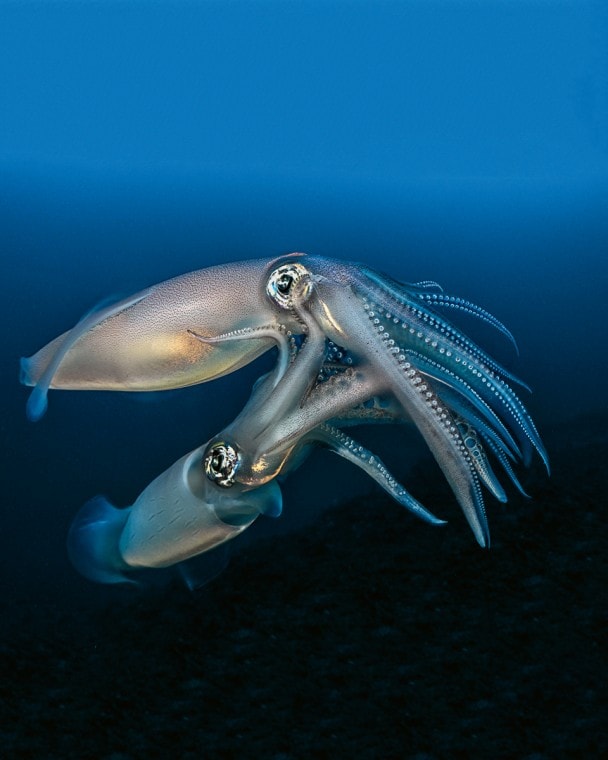
Veined squid reproducing (Loligo forbesii), Riou Archipelago, Calanques National Park - 68 m.
We breathe a gas mixture of 97% helium and 3% oxygen that enters our lungs and COOLS US FROM THE INSIDE TEN TIMES FASTER THAN AIR.
We are back in the descent module, freezing cold. We are breathing a gas mixture of 97% helium and 3% oxygen that enters our lungs and cools us down from the inside ten times faster than air. Although at 100 metres the water temperature maintains a constant 14 degrees Celsius, we are colder than in Antarctica. But this precise cocktail is mandatory in order to avoid epileptic convulsions and narcosis due to the presence of nitrogen and the excessive oxygen content of the air when breathing at great depths. Helium acts on our vocal cords and alters our voices: it is almost impossible to understand each other. To communicate in the station and with the surface team, we use microphones and a system to adjust our tone of voice to normal (or almost).
Slowly towed by a tug, the Bathyale station goes to our next dive site. There are 21 of them, from Marseille to Monaco and back. This represents 600 kilometres of coastline. We have identified sites that are remarkable for their beauty and their abundance of life. We are particularly focused on what I like to call “the coral reefs of the Mediterranean”.

The aquanauts in the descent module after a dive.
These structures look like the coral reefs in warm seas, but they are not! The exact term is “coralligenous reefs” and these distinctive ecosystems grow far from the surface... between 70 and 120 m deep, invisible to the eyes of the bathers of the French Riviera. The origin of these oases of life is life itself, for these rocks are made by living organisms: builder creatures! The foundations are provided by purple stone algae. Then animals come to reinforce them: marine worms, calcareous sponges, corals, molluscs – a crowd of workers building one on top of the other. Some build, others demolish. The red algae make rock, the acid sponges nibble it. There are many in both camps: those who dig against those who build, those who dissolve against those who cement. This balance of power is a stroke of luck, because if the builders were without adversaries, the reef would be like a wall of stones, monolithic, smooth, deprived of reliefs and fractures. No fish would shelter there, no crustacean would hide there, no gorgonian would stand there. Diversity triumphs by creating more wealth than conformity. Today there are more than 1,600 species in these coralligenous reefs, which are unique to the Mediterranean deep. Among them, the sparkling parrot seaperch is present in abundance. An abundance that prevents one from seeing the rare, the extraordinary in the midst of the ordinary. I have waited years to finally see the parrot seaperch, cousin to the common perch. The differences are both subtle and obvious: a slimmer body, a larger eye, clearly twotoned scales, and a tail with remarkable filaments. It is before my very eyes and photographed alive for the first time. This realization is enough to encourage me and tell me that all this is not in vain.
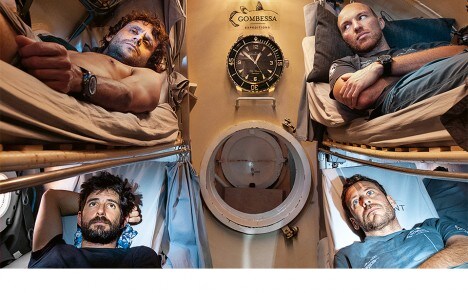
The living quarters in the Bathyale Station: sharing 5m2 for eating and sleeping.
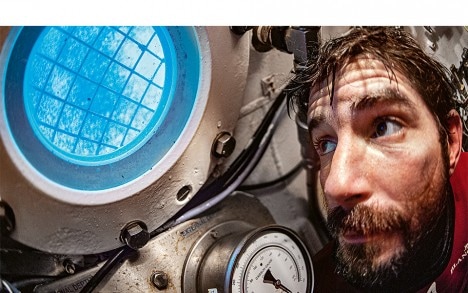
The Bathyale station slows its trajectory. The module releases itself, ceases its orbit and GRAVITY CARRIES THE FOUR AQUANAUTS 120 M LOWER. Approaching Planet Mediterranean.
The Bathyale station slows its trajectory. The module releases itself, ceases its orbit and gravity carries the four aquanauts 120 m lower. Approaching Planet Mediterranean. Unlocking the door, extra-vehicular exit, exploration... The words are almost right, but this is not an interstellar journey: here below, life is everywhere. This space is not sterile. Strange forms, strange attitudes, deceitful intentions. This concentration of exoticism confuses things. It creates a doubt between the inert and the animated, between the harmless and the poisonous. I spot it suddenly opening its endless arms. I believe the first naturalists were hypnotized by this animal when they discovered it. Undoubtedly troubled, not finding the words, they called upon mythology to christen it “Gorgonocephalus”, in reference to the hair of the Greek creature that had the power to petrify those who looked at it. In reality, the monster is harmless and is a cousin of the starfish. With the difference that its five arms divide and re-divide again and again. So much so that, curled up, the Gorgonocephalus measures barely ten centimetres in diameter, but deployed, exceeds a metre in span. Like starfish, they reproduce at a distance, without touching each other, expelling their gametes with the current. However, on several occasions we have observed their long arms touching each other in a curious manner, delicate caresses that remain inexplicable to this day. I am certain that under the sea, passions are played out, calm or brutal, lasting or fatal, and no one on Earth has any idea.
We are halfway through the expedition. The station stops at the foot of the Oceanographic Museum of Monaco. Looking through the tiny porthole, I can hardly see the historical monument on top of the Rock. I can barely even see what is going on around us on the boat. Being confined by choice is a singular experience. The crowding in the cabin, the immensity of the depths. Suffocating heat in the steel enclosure, penetrating cold in the icy water. Stultifying inaction inside, vital vigilance outside. Supervised inside, free of all limits outside. One after the other, the aquanaut goes from claustrophobia to vertigo, from heat stroke to the smack of cold, from idleness to overwork, from paranoia to ecstasy, from introspection to exploration, from depression to showingoff... Twice a day, the contrasts are violent, to the point of putting us completely off the change. However, the ultimate paradox of this experience lies in the fabulous desire to start again.
Off Villefranche, the Bathyale station is positioned over the vertical projection of a cliff.
We will not go any lower during this mission. The negative altitude is 145 m. Here, the Alps extend under the Mediterranean Sea. Jagged walls in the calm of the depths: this is the coastline of the past. Twenty thousand years ago, the surface of the sea was here. To go down into the depths is to go back in time. This drop-off is staggering, and one of the most extreme in the French Mediterranean since the top is at 50 metres and the bottom at 200-210 metres. At 145 metres, there is hardly one percent of sunlight. It is the mesophotic zone. But at these great depths, there is a paradox: when the luminosity decreases, the visibility increases... and photography of great spaces becomes possible. Suddenly the diver has the perspectives of a mountaineer. And I finally appreciate that, under the sea, other lands exist...
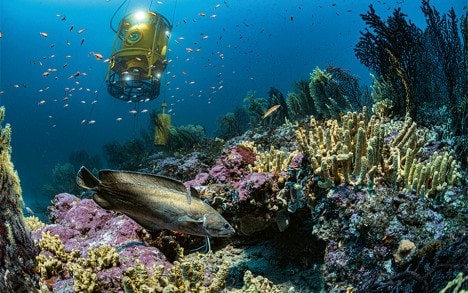
Cap Canaille, Cassis - 68 m.
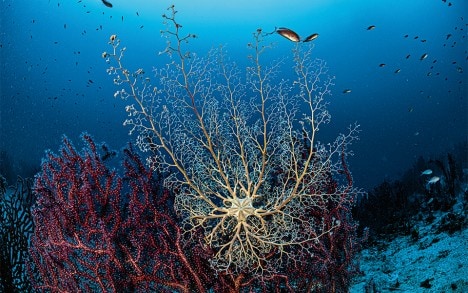
Gorgonocephalus (Astrospartus mediterraneus), Le Grand Congloué, Calanques National Park - 62 m.
Black coral forest (Antipathella subpinnata), Blauquières Bank, Calanques National Park - 78 m.

Living beings are rare here. Precious stones that must be extracted. The animals of the depths are like the orchids of the mountains, attractive because they are inaccessible...
There are creatures that have to be flushed out, and then there are those that come to you.
The strange sunfish roams the depths in search of the cleaner fish that heal its fragile scale-less skin, attacked by parasites.
We move towards a forest. Snow has fallen under the sea. Everything seems to be covered with frost. These white trees, like a forest under the snow, are black coral. Its skeleton, of which one makes jewels, is black whereas its skin, and the polyps which cover it, are white.
Black coral forms white forests, and this paradox is a sad admission. It is an admission of the men who, to say it like it is, preferred it in death rather than in its living brightness, seeing it in terms of its use rather than stylishness. When we get closer, the cold is an illusion that ceases when the burning starts: the black coral paralyses the stinging jellyfish. This sea wasp met her match. Only three white forests are known on the French coastline. All of them are between 80 and 100 metres deep. Some experts thought that these small forests were the gathering of thousands of clones, forming one giant individual. Nonetheless, samples will reveal that some branches have a sex, mostly female. This means that different individuals can be born! This is quite reassuring because genetic diversity can emerge from sexual reproduction. The black coral present here will be less vulnerable to rapid climate changes.
There are narwhal shrimps in the snowy branches. They are so numerous that they shape the scenery, red, striped with white and dotted with blue. There are thousands of them, and they are all connected: their antennae touch each other and create links between them. Thus, the slightest click is felt, and alert messages circulate in real time from one end to the other of this crustacean corporation... Narwhal shrimps invented social networks and high-speed information.
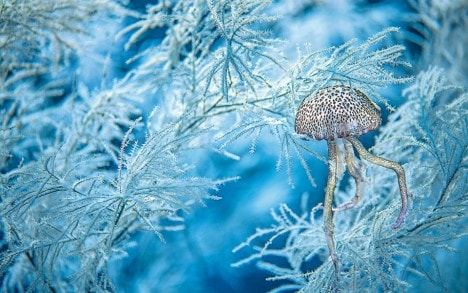
Mauve stinger trapped in black coral (Pelagia noctiluca), Blauquières Bank, Calanques National Park - 78 m.
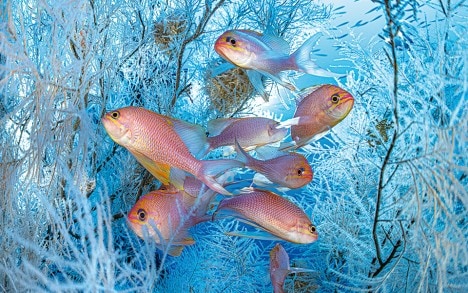
Swallowtail seaperch (Anthias anthias), Blauquières Bank, Calanques National Park - 78 m.
Field of peacock worms (Sabella pavonina), Phare de la Cassidaigne, Cassis - 72 m.
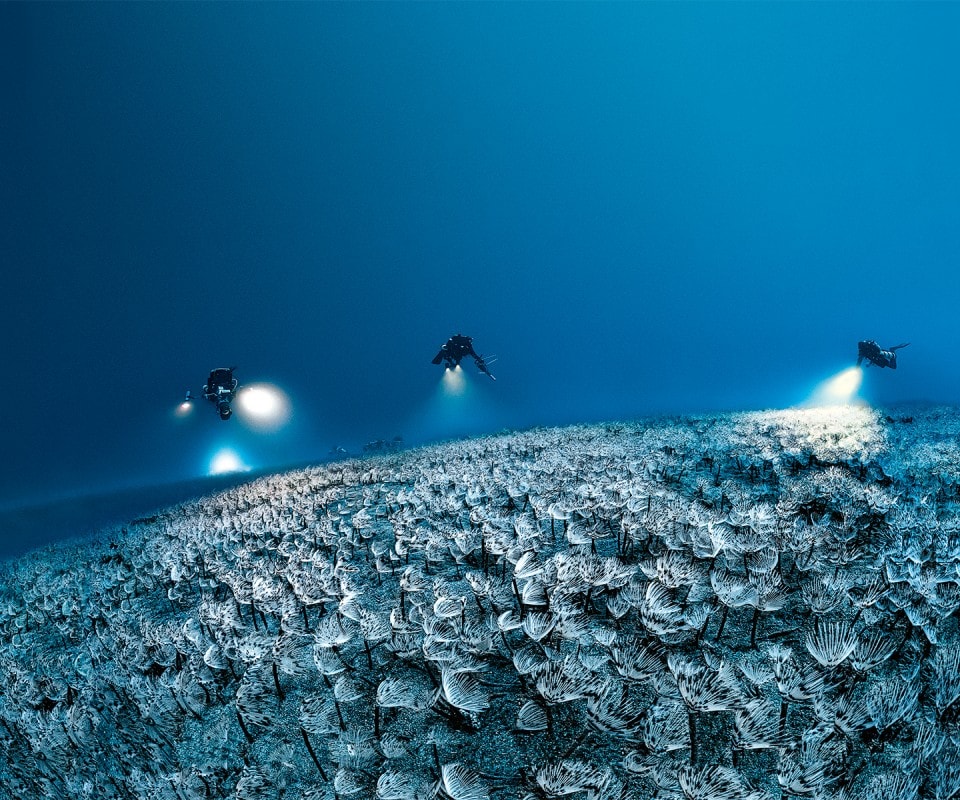
These are the LAST REMAINING HAVENS for all the displaced creatures from the COASTLINE UNDER PRESSURE.
In the station however, there is no connectivity, although my one-month-old daughter is outside. I need to focus on the mission. I take advantage of this strange period to read and work on my images that I bring back from the depths, where I enjoy every minute, because the confinement in the station is sometimes difficult to bear, especially for Yanick. But I know that we are extremely lucky to be here despite the conditions. On a four-week mission, I think I will acquire greater knowledge and intuition about these deep ecosystems than in the 20 years that preceded it. Because this time in the deep will flesh it out. So we put on our wetsuits once again, ready for one of the last outings before starting our decompression.
The Bathyale station is back in the waters of Marseilles, where many wrecks lie at great depths. The Gombessa team is made up of biologists and naturalists, not archaeologists, but using saturation diving for other disciplines seems to be the next step. Many archaeologists would dream of spending six hours on the cargo ship Natal or on the amphora field at Port-Miou, 100 metres below the surface.
The last dive before decompression. A few metres away from Thibault and me, Antonin is taking a sample of the last sediments for the team of scientists on the surface. By analysing the silt samples, we can detect dangerous substances from an official list that includes 18 pesticides, 16 hydrocarbons, 17 metals, and 41 carcinogenic PCBs. Even at great depths, humans leave invisible traces.
With the pressures on the surface becoming too overpowering, large animals have moved to great depths. Monstrous anglerfish, conger eels, lobsters the size of tanks. A sense of modesty forces even the familiar coastline moray eels to migrate to the subdued light for their evenings of courtship. The giants prefer to distance themselves from the little men, in search of spaces that seem to be withstanding destruction and extinction. These are the last remaining havens for all the displaced creatures from a coastline under pressure. In science, one refers to resilient ecological niches. But can a giant settle for a niche?
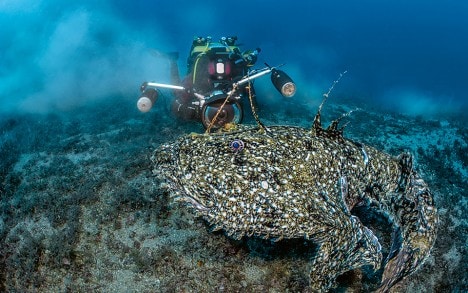
Monkfish (Lophius piscatorius ).

Crystal prawn (Periclimenes scriptus) in the Mediterranean sea-finger (Alcyonium acaule) Port-Cros National Park - 65 m.
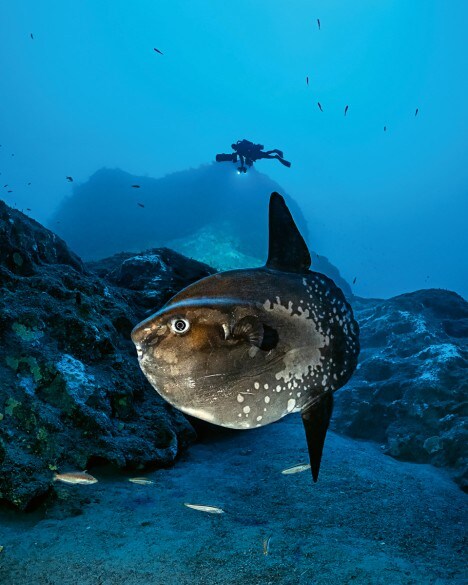
Sunfish (Mola mola), Cap Taillat, Ramatuelle - 130 m.
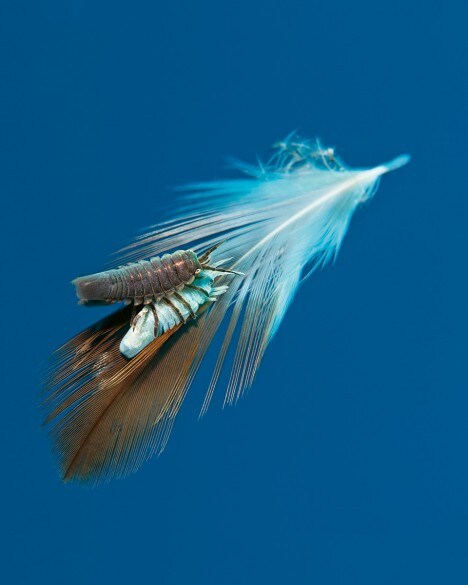
Metallic isopod metamorphosis (Idotea metallica), Sausset-les-Pins - 6 m.
The Mediterranean is not dead. WHAT FUTURE HAVE WE LINED UP FOR IT ?
As the descent module lifts off the bottom one last time, I think about the four weeks that have just passed. It doesn’t matter whether it is a simple oasis in the desert, or a vast forest full of life, the Mediterranean is not dead. What future have we lined up for it? The Mediterranean was once the cradle of our civilizations, the arena of the first wars, the circle of the first poets. It has become the dustbin of our societies, the swimming pool for vacations, the tomb of refugees. Tomorrow, will it become the theatre for what we did right? The laboratory of our sustainable ambitions? Nothing is impossible in this almost enclosed sea in which everything, the worst and the best, is amplified. Only one thing has not changed, the Mediterranean is still home to luxuriant life. It remains vibrant and its heart is still beating…
July 28th 2019. The door of the Bathyale station opens to the fresh air. For 28 days, it took us on a journey from amazing surprises to incredible marvels. Rustic and old-fashioned, it has stayed the course. Every journey has its own means of transport. A spaceship to the stars, a Bathyale station to the abyss. The great depths are the distant planets of a neighbouring galaxy. These distances of 100, 120, 140 metres, are both laughable and impassable. This universe is neither close nor distant, it is elsewhere. Thus, to reach it is to become part of a parallel world. We went very far, but we did not really leave. We stayed at home, on Planet Mediterranean.
